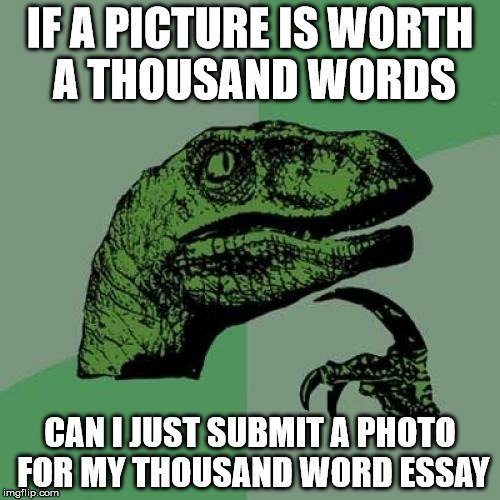
My brain hurts…
It’s almost the end of April. And I’m struggling. I know many of you are also struggling, but hang in there! The end is near!
With the multi-modal project looming over my head, I feel overwhelmed. With all of this new found freedom I have been given to express my thoughts I don’t know what to do!
I want the project to encompass everything I have learned from this semester, but that’s just not possible. So, what do I really want to focus on?
I think the two things that have stood out to me the most is LPP and multi-modality. To put it in extremely simple words, let kids figure out on their own way to express their ideas in an area that aids the learning of the student. It’s rather hard to portray these things though.
When brainstorming for this assignment, immediately my brain goes to video. Video allows for a lot of information to be given in a short amount of time. Video also allows multiple modes and resources to be incorporated into the project. The issue is, I’m not all that tech savvy when it comes to taking and creating videos. I know that Kim has said to not let the technology stand in the way of our projects, but if I’m given all this freedom to create something of my own then I want to make sure the final product is goooooood.
So, Kory and Russell and I have talked a bit about creating a video. Although nothing is for certain, we want to take on the same kind of vibe of Zach Galifianakis’ show “Between Two Ferns.” His small interview show on YouTube essentially allows satire, underhanded, passive aggressive comments, and sarcasm to combined into one perfect mini interview session. I love it. and it’s perfect for all of our personalities. As we have grown a little jaded after these years of graduate school. I think we want to incorporate the ideas we have learned and kind of poke fun at our current state of composition teaching.
We didn’t get much time to thoroughly discuss our ideas of this project, but I know it will turn out great. I’m nervous with all of this freedom we have, but I think it’s going to be fun to see where the assignment ends up. Even if we don’t follow through with this idea, I want the project to be something funny and enjoyable, not unbearable and boring.
I know this blog isn’t much, but it’s all my poor brain could muster up.
Keep on keepin on! April is almost over.



